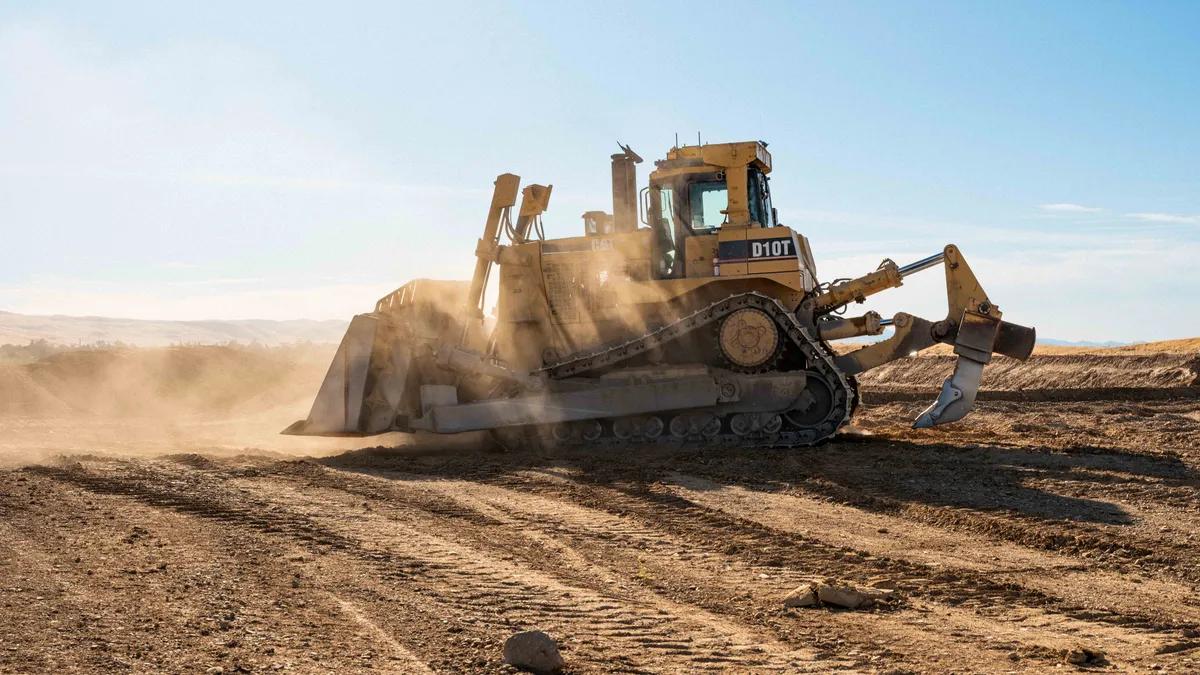Dive Brief:
- Teleo, a robotics firm that retrofits heavy equipment to make it semi-autonomous, announced deals this month to provide its products to its first three construction firms, according to a press release shared with Construction Dive.
- London, Ontario-based John Aarts Group; Sacramento, California-based Teichert; and Fort Myers, Florida-based Tomahawk Construction have partnered with Teleo to deploy remote-operated wheel loaders, bulldozers and dump trucks, respectively. The Palo Alto, California-based company also has two other unannounced clients, bringing the total number of the company’s first customers to five, Vinay Shet, Teleo’s co-founder and CEO, told Construction Dive.
- Other manufacturers have made autonomous construction equipment announcements this month, ahead of the ConExpo-Con/Agg conference in Las Vegas this week. Honda plans to showcase its new electric autonomous work vehicle, according to a release shared with Construction Dive, and Volvo will be showcasing its LX03 autonomous concept wheel-loader.
Dive Insight:
Teleo’s semi-autonomous platform allows one worker to operate multiple pieces of heavy machinery units across different jobsites via remote control, cutting down on labor and time spent on the project. The company also provides the technology necessary for the retrofitted machine to communicate with a command center where the operator works, according to the release.
Shet told Construction Dive that an operator can be trained ready to operate the software in anywhere from a few hours to a few days.
Teleo also announced that it’s expanding globally through a new dealer partner network spanning the United States, Europe and Canada, according to the release.
Software developer Polymath Robotics and hardware developer Hard-Line announced the launch of another autonomous bulldozer at ConExpo this week. The partnership used Hard-Line’s remote operation technology and Polymath’s autonomous navigation on the dozer, designing it to tackle repetitive tasks. It will be available for any bulldozer, whether new or existing, according to the release.
Shet believes autonomous equipment can help combat construction’s growing labor shortage. Current projections estimate that the industry needs at least 500,000 workers to keep up with construction demand.
“We are seeing that the number one pain point that customers are telling us they have is around labor shortage. They are unable to find qualified operators to run their machines,” Shet said.
Early adopters
Despite the advantages, adoption of autonomous technology for construction has been slow compared to industries such as mining and agriculture. Construction sites largely lack the more focused range of predictable, repetitive tasks over defined topographies that benefit agriculture and mining. Rapidly changing jobsite conditions can hinder full-scale, driverless deployment of heavy equipment.
In addition, the cost of buying new equipment, upgrading existing equipment and training workers prevents some contractors from trying it.
Scott Lyons, the managing member of Tomahawk Construction, spoke about his reason for giving the technology a try, and the labor struggles he’s hoping autonomous machines can cut through.
"We have had two trucks sitting around for 10 months without operators in them,” Lyons said in the release. “Due to the current labor market, we know going forward we need to do more with less.”













